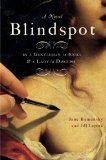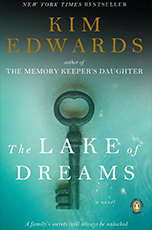Book Review: Blindspot
 By Jane Kamensky and Jill Lepore
By Jane Kamensky and Jill Lepore
Spiegel & Grau ©2008 | Hardback 500pgs
Blindspot opens in Boston on the eve of the American Revolution, during the spring of 1764. When portrait painter Stewart Jameson sets foot on the docs of Boston Harbor, he arrives not hoping for a new life, but running from an old one. Wanted in his homeland of Scotland for outstanding debts, he has come to the Colonies to escape jail time and find his only true friend. Accompanied by his mastiff, Gulliver, he quickly sets up a small artist studio on Queen Street and advertises for a young man to apprentice him in his art.
The ad is answered by a young woman named Frances “Fanny” Easton, in the guise of a teenage boy called Francis Weston. Though born into high society, Fanny has fallen far from the station of her birth. Led astray by a lecherous art teacher in her girlhood, she was driven from her father’s luxurious mansion in shame. Desperate to escape the workhouse where she has toiled for two years, she is willing to do anything, including switching genders, to change her fate. To her friend and confidante, Elizabeth, she writes: “…I must make this Jameson see my talent but not my sex… I would turn my talent into capital, and that capital into liberty.”
So begins a story line similar to that of Victor/Victoria. As the days and weeks pass, Jameson and “Weston”, grow increasingly fond of each other. Their attraction is evident in their witty, flirtatious, at times bawdy, verbal exchanges. But, both are troubled by their feelings. Fanny fears that her true identity will be discovered and Jameson will throw her out on the street, as her father did. Jameson, though he has enjoyed the romantic attention of both men and women, fears any advances on his part would be a gross exploitation of the master/apprentice relationship he has with the young boy.
Their tumultuous feelings are mirrored in the city of Boston as tensions rise over the impending Stamp Act, and debate begins among the landed gentry about the righteousness and lawfulness of slavery. When Samuel Bradstreet, society scion and vocal abolitionist, is murdered, both painter and apprentice get caught up in the investigation. Jameson, being among those who discovered the body, is forced to testify against the slaves wrongly accused of poisoning Bradstreet.
Tensions rise further with the arrival of Dr. Ignatius Alexander, Jameson’s one true friend and his main reason for settling in Boston. Born as a slave, Dr. Alexander is a product of a cruel bet between two British aristocrats. The Duke of Cornwall theorized that given the best education and advantages from birth, a black child would be “indistinguishable, except for his skin, from an English gentleman.” The Earl of Berkeley wagered five thousand pounds that the Duke would be wrong. An infant child was bought off a slave ship the next day, and the education of Ignatius Alexander begun. Twenty-five years later, Alexander has achieved degrees from Britain’s most prestigious universities, and the Earl is enraged to find he’s lost the bet. He then announces his plans to auction off his “property” to the highest bidder, to recoup his losses. Here the cause of Stewart Jameson’s debt is revealed. Desperate to buy his dearest friend’s freedom, he borrows two thousand pounds from a pair of unscrupulous money lenders. In a final act of cruelty, the Earl takes Jameson’s money, but sells Alexander to another bidder, bound for the Colonies.
The hands of fate have brought these three central characters together in Boston, amidst social and political turmoil. Together they must solve the mystery behind Bradstreet’s murder, free the slaves wrongly convicted of his death, and paint a few vanity portraits, all while hiding Alexander’s true identity. The Doctor has been branded as a runaway slave by the New England newspapers, so Jameson and “Weston” run the risk of imprisonment for harboring the errant slave. “Weston” and Dr. Alexander develop an immediate distrust of one another, but their affection for Jameson and their desire to free innocent people from inhuman bonds, force them to put aside their differences for the greater good.
As their investigation progresses, “Weston” is forced to reveal herself as Fanny Easton. She decides to risk rejection from Jameson in order to live an honest life. While Dr. Alexander discovers a few revelations of his own, gathering the citizens of Boston together on the false premise of an art exhibit, in order to flush out Samuel Bradstreet’s true killer. As Blindspot comes to a close, a story interwoven with cleverness, lively dialog, and historical fact is neatly wrapped up. Though each character is handicapped by his or her own blindspot, often stemming from race, gender or social station, a new world has been unveiled. This new world cannot offer a fairytale happy ending, but rather a promise of happiness to come.
If you liked this title, you might also like: Johnny One-Eye: A Tale of the American Revolution by Jerome Charyn
Already read the book? Leave a comment below and tell us what you think.


I find your reviews to be very cogent and erudite. I enjoyed reading them very much!